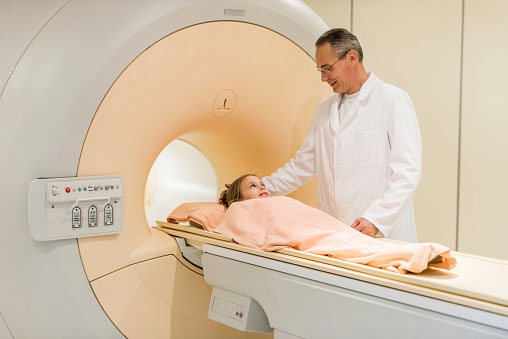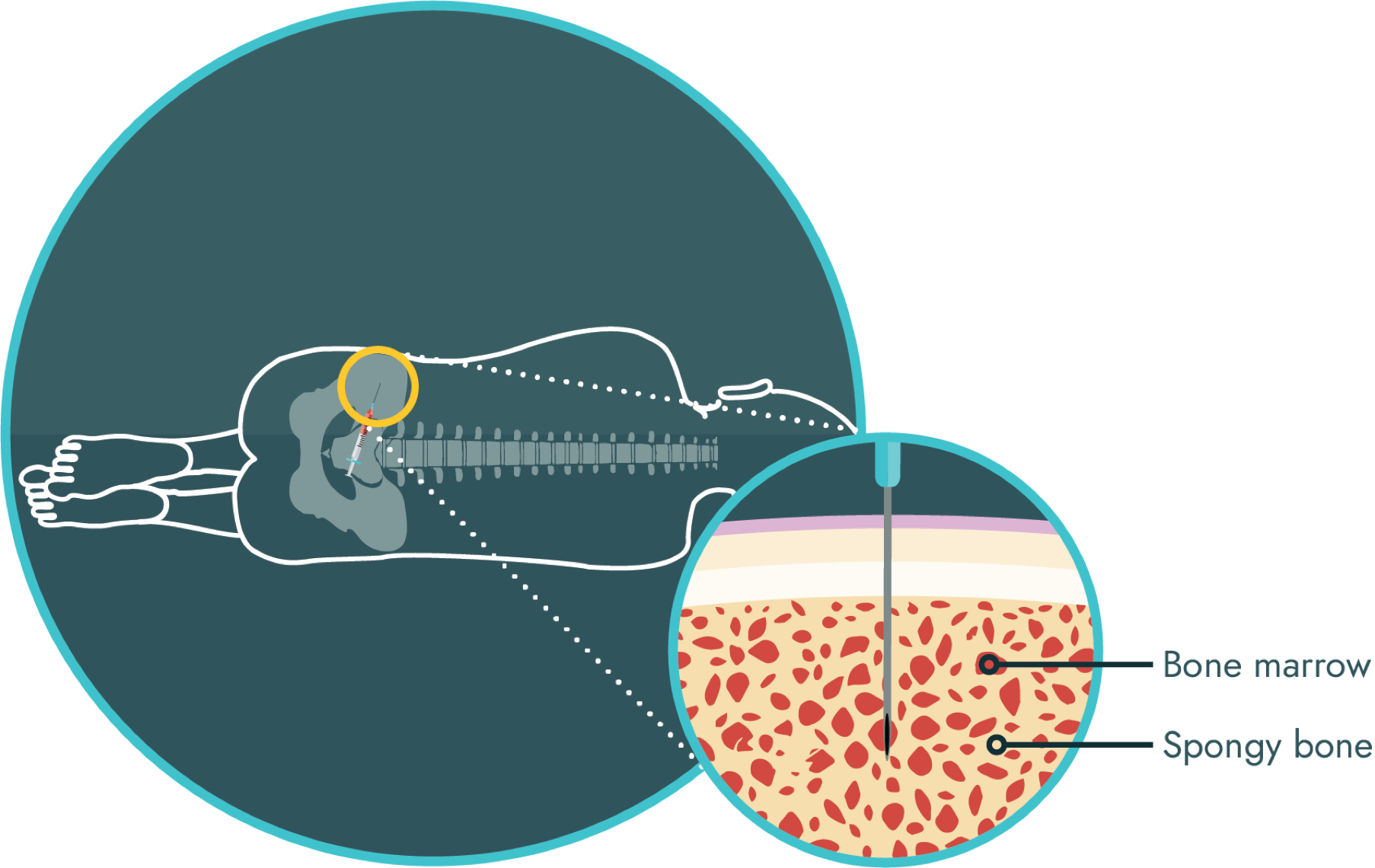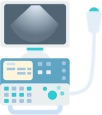 How is Neuroblastoma Diagnosed?
How is Neuroblastoma Diagnosed?
How is Neuroblastoma Diagnosed?
How is neuroblastoma diagnosed?
If your child is thought to have neuroblastoma, the healthcare team will gather information using a series of tests and imaging scans.
After the tests are complete and the oncologist reviews the results, your child’s neuroblastoma will be assigned to either the low or intermediate risk or the high-risk group. Learn more about these risk groups and what they mean for your child's treatment.
Physical examination and laboratory tests
The healthcare team will begin with a general physical exam of your child, including full medical history, as well as urine and blood tests.
 Physical examination and laboratory tsts
Physical examination and laboratory tsts
Physical exam and medical history
A physical exam may be one of the first exams performed by your child’s oncologist. This is done to check for general signs of health, as well as any physical signs of neuroblastoma, such as lumps, swelling, or weakness in your child’s arms and legs.
At this time, you may be asked questions about your child’s symptoms and how long they’ve been experiencing them. You may also be asked about your child’s medical history and if there is a family history of neuroblastoma or other cancers.
Laboratory tests
Urine and blood tests are done as part of the diagnosis process and are also monitored throughout your child’s treatment.
-
Urine tests look for hormones that are released by neuroblastoma cells
- Your oncologist may call these hormones catecholamines, and more specifically vanillylmandelic acid (VMA) and homovanillic acid (HVA)
-
Blood tests help the team see how your child’s body is working
- Some potential tests are CBC (complete blood count or “counts”), electrolyte levels, and liver and kidney function
Imaging and scans for neuroblastoma
The healthcare team will use special machines to create detailed images of your child’s internal organs, bones, soft tissues, and blood vessels. This is often referred to as imaging or scans. The type of scans your child receives will depend on where the oncologist thinks the primary tumor is, and if they think the neuroblastoma has spread (metastasized) to other parts of the body.
To make a neuroblastoma diagnosis, your child’s oncologist may order some or all of the following scans.
 Imaging and scans for neuroblastoma
Imaging and scans for neuroblastoma

X-rays are pictures of specific parts of the inside of the body, taken using low doses of radiation.
- An X-ray may be taken early in the diagnosis process, possibly by your child’s pediatrician, to see if there is a tumor in that part of the body causing any of your child’s symptoms. Learn more about the symptoms of neuroblastoma
Biopsies
Biopsies are used to confirm:
- If the cancer is neuroblastoma
- The characteristics of your child’s tumor
- If the cancer has spread (metastasized) to the bone marrow
Types of biopsies your child may receive:
- Tumor biopsy is a procedure to remove a small sample of the tumor to be examined under a microscope
- Bone marrow aspirate and biopsy is a procedure done to look at the health of your child’s blood cells, and to search for any neuroblastoma cells that may be present. To do this, a needle will be used to remove liquid bone marrow from inside the hip bone. Oncologists also remove a sample of spongy bone marrow from the same hip bone

Your child will most likely be asleep (given general anesthesia) for these procedures. Ask your child’s oncologist about the type of sedation and pain control your child may receive.
All of these tests and scans will give your child’s oncologist and healthcare team a lot of helpful information about the type of neuroblastoma your child may have. They will use this information to determine your child’s neuroblastoma risk group and treatment.
Understanding neuroblastoma risk groups
Your child’s oncologist will evaluate the tests and image scan results to determine your child’s risk group. This “risk” refers to the risk of relapse (the risk of the neuroblastoma returning after treatment).
Neuroblastoma is classified as low, intermediate or high-risk. The treatment your child will receive depends on their risk group. For example, a child with high-risk neuroblastoma may receive more intensive treatment because they have a higher risk of relapse.
Key risk factors
Stage of disease

Describes how much neuroblastoma is in the body and whether it has spread (metastasized) from its original site
Age

Many children younger than 18 months have non–high-risk neuroblastoma
Tumor characteristics (histology)

Neuroblastoma cells are studied under a microscope to determine if the cells are favorable or unfavorable
MYCN gene amplification

MYCN is an oncogene, a gene that helps control cell growth. Neuroblastoma tumors that have too many copies of MYCN tend to grow faster and may be harder to treat. Oncologists commonly call this MYCN-amplified
DNA index of tumor cell

The amount of DNA in each cell. DNA index tends to be a useful prognostic factor for children younger than 2 years of age
Chromosome changes

Certain changes in the chromosomes of neuroblastoma tumor cells can help determine a risk classification
At first, the risk groups for neuroblastoma can be complicated and may be hard to understand. If you are unsure about your child’s risk group, ask your child’s oncologist to explain it to you.




